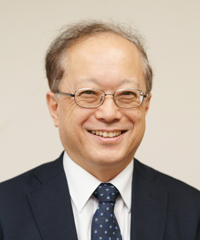Due to the rise in COVID-19 infections, a state of emergency has been declared for the third time in Tokyo and a few other prefectures. Except for universities, schools including childcare facilities, kindergartens, and elementary and junior high schools, have continued to remain open since the early stages of the pandemic to provide child care and education amid concern about infection cluster.
However, many kindergartens and schools are starting to consider the need to temporarily close due to concerns about variants of the virus also infecting young people.
To those reading this, let me ask "Do you know why kindergartens and schools temporarily close under such circumstances?" No doubt, most answers to this question will readily cite "prevention of secondary transmission or cluster outbreaks." But is it really possible to decrease secondary transmission and cluster outbreaks by temporarily closing schools? And to this question, we could also expect a reply such as "We don't know right now, but we should stop doing whatever could possibly lead to increased transmission."
But if we examine this carefully, in response to doubt regarding whether closure leads to fewer cases of secondary transmission and cluster outbreaks, we find solid evidence in a study in Pediatrics, a journal published by the American Academy of Pediatrics*1.
A study was conducted in 11 school districts in North Carolina (with more than 90,000 students) from August 2020 to the end of October 2020, a period when COVID-19 infection was rapidly increasing in the United States, and the research report closely examines the number of cases and routes of infection among teachers and students who had in-person classes while taking preventative measures (wearing masks, social distancing, washing hands, and temperature checks). This research was conducted in order to find out if secondary transmission in in-person classes where preventive measures were taken was higher than the rate of secondary transmission in the general population. If the secondary transmission rate is higher, it is possible to expect that closing schools will result in a lower overall infection rate. On the contrary, if the secondary transmission rate is not higher, it indicates that closing schools is not effective, and even if schools are closed, that will not be effective in curbing an increase in COVID-19 infections.
The eleven local school districts that participated in the ABC Science Collaborative (ABCs) organized by Duke University in North Carolina and the University of North Carolina at Chapel Hill, to prevent COVID-19 infection were offered the option of not only conducting online classes, but also in-person classes, which they chose to do during the nine-week period of the study. A survey was conducted of students (elementary to high school) and teachers, which together totaled more than 90,000 participants. An infection prevention coordinator was dispatched to each participating school to provide instruction on measures to be strictly implemented such as the wearing of masks by teachers and students, handwashing, and social distancing (6 feet or approximately 180 centimeters). During the survey period, when infection in a teacher or student was confirmed (including symptomless cases), a thorough follow-up survey and tests were conducted to check for secondary transmission.
During the survey period, 773 school children and teachers received the PCR test, and infection was confirmed in the community, out of which 32 cases were found to be cases of secondary transmissions in which the virus was transmitted by someone at school. There was no evidence of infection from student to the teacher. This information may make you think that the number of infections among school children (and teachers) receiving in-person learning was rather high, and consequently, nursery schools and schools should have been closed. However, we should keep in mind that this research did not ask "How many children attending in-person classes at school were infected by COVID-19?" but rather sought to find out "Was school the site of infection? (Did secondary transmission occur in school?)".
In North Carolina, during a 9-week survey period, it was found that when the general public contracts COVID-19, the transmission rate for each infected person is one person or slightly more. If the teachers and students who participated in the ABC Science Collaborative showed a transmission rate like the average rate in North Carolina, there would be approximately 900 cases of secondary transmission at school. Nevertheless, the strict follow-up study showed only 32 cases of secondary transmission at school. In other words, if the measures to prevent infection are taken, in-person classes will not lead to increased secondary transmission and more cases of COVID-19.
Interpretations of these research results are divided. Although the cases of secondary transmission might be considered low, they have occurred in school, and for this reason, schools should be closed. This would probably be the most common opinion in Japan. However, the authors of the study that I have introduced claim that in-person classes with proper measures to prevent transmission resulted in a lower-than-average secondary transmission rate for the region, and therefore, opening schools may be a better infection control measure for the region.
School authorities may really be ready and willing to close down their school if it will prevent even one person from becoming infected. However, rather than students being active in various activities in their individual homes when they are not taking lessons on-line, the authors of the study claim that taking in-person classes with a teacher who is well informed of measures to prevent infection will lead to a decrease in secondary transmission in the area.
It is not possible to make a simple comparison between Japan, where social pressure is strong, and the United States, but this is evidence that I would like to introduce to teachers and administrators in the field of education.
- *1 Zimmerman KO, et al. Incidence and Secondary Transmission of SARS-CoV-2 Infections in Schools. Pediatrics, doi.org/10.1542/peds.2020-048090, 2021.



 Yoichi Sakakihara
Yoichi Sakakihara










